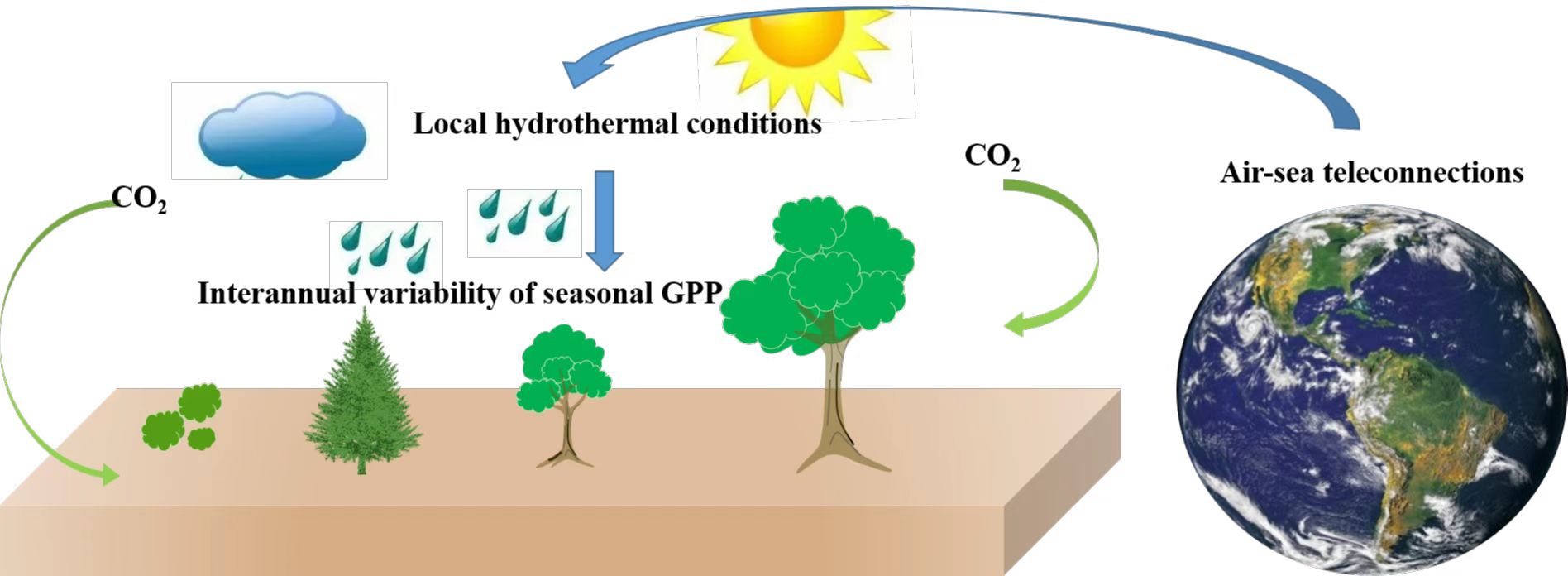
Since the 1950s, scientists have measured land-based carbon uptake primarily through plants' cellular respiration of CO2 by gross primary production (GPP).
The year-to-year change, or interannual variability of a region's GPP is important, because it is closely linked to weather and climate.
Recently, a study led by Dr. YING Kairan from the Institute of Atmospheric Physics (IAP) of the Chinese Academy of Sciences (CAS) revealed the influence of the air-sea teleconnection, or global circulation process, on the GPP interannual variation across China during the spring, summer, and autumn growing seasons.
The study was published in Advances in Atmospheric Sciences.
The team used an ensemble of the seven-member Trends in Net Land–Atmosphere Carbon Exchanges (TRENDY) climate model to investigate China's seasonal GPP interannual variability between 1951-2010. This model allowed scientists to investigate the relationship between sea surface temperature and atmospheric circulations.
GPP can be broken down into several components, or signals, that identify different chemical processes involved in the sugar conversion process in plants from photosynthesis. The signal that is most closely related to influencing climate is the Residual Principal Component (R-PC), which considers cellular respiration, water vapor exchange, dissolved organic carbon, and several other minor processes.
Over time, R-PC is identified by separating out its significant impact from the linear trend of GPP and the GPP memory, which can give seasonal wet/dry signals through soil analysis.
Researchers broke down their analysis of seasonal GPP and R-PC throughout China into two parts, R-PC1 and R-PC2. Results showed that between spring and autumn, analysis trends initially showed a monopole, then trending toward a dipole or tripole spatial structure.
Clear seasonal evolution was apparent considering that the trends' maximum centers regarding R-PC existed between spring and summer, or the primary growing season. This means that the dominant two GPP R-PC signals are significantly related to sea surface temperature variability in the eastern tropical Pacific Ocean and the North Pacific Ocean during spring to autumn.
Likewise, the El Nino–Southern Oscillation (ENSO) and the Pacific Decadal Oscillation (PDO) teleconnections also appeared to have a significant influence on GPP and R-PC. Statistically, the SST and atmospheric circulation factors identified in the study explained 13%, 23% and 19% of the total variance for seasonal GPP in spring, summer, and autumn, respectively.

Air-sea teleconnections play a key role in year-to-year variability of seasonal gross primary production throughout China (Image by IAP)

86-10-68597521 (day)
86-10-68597289 (night)

52 Sanlihe Rd., Xicheng District,
Beijing, China (100864)

